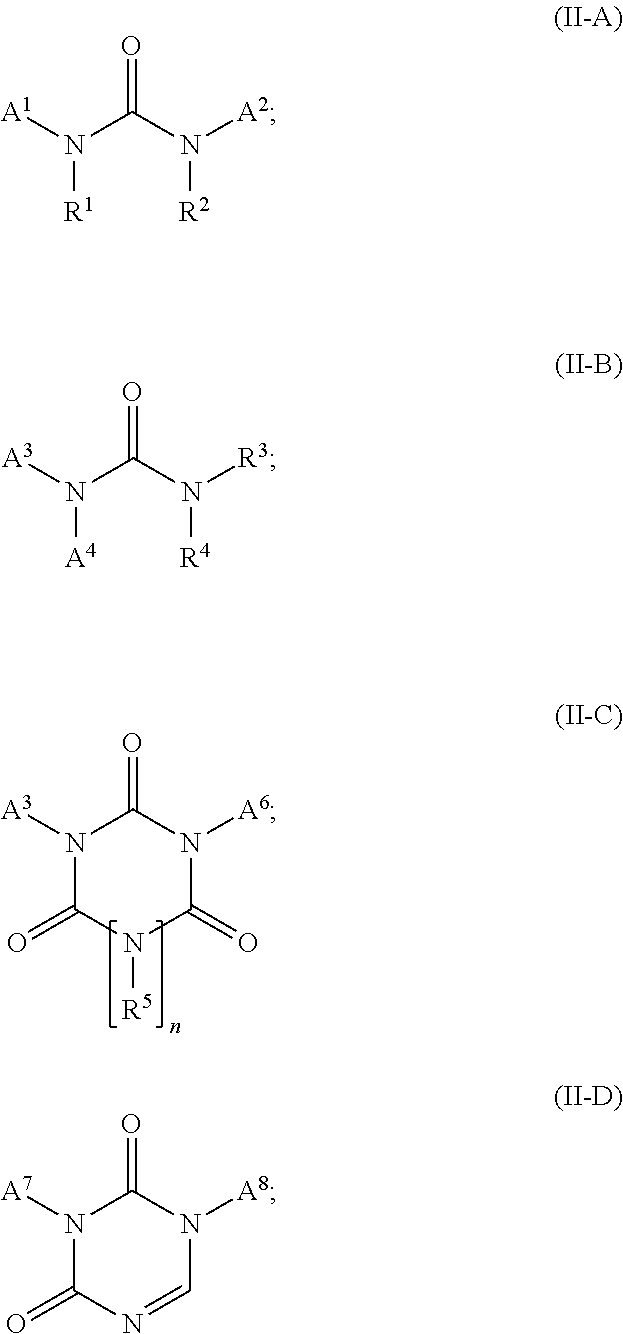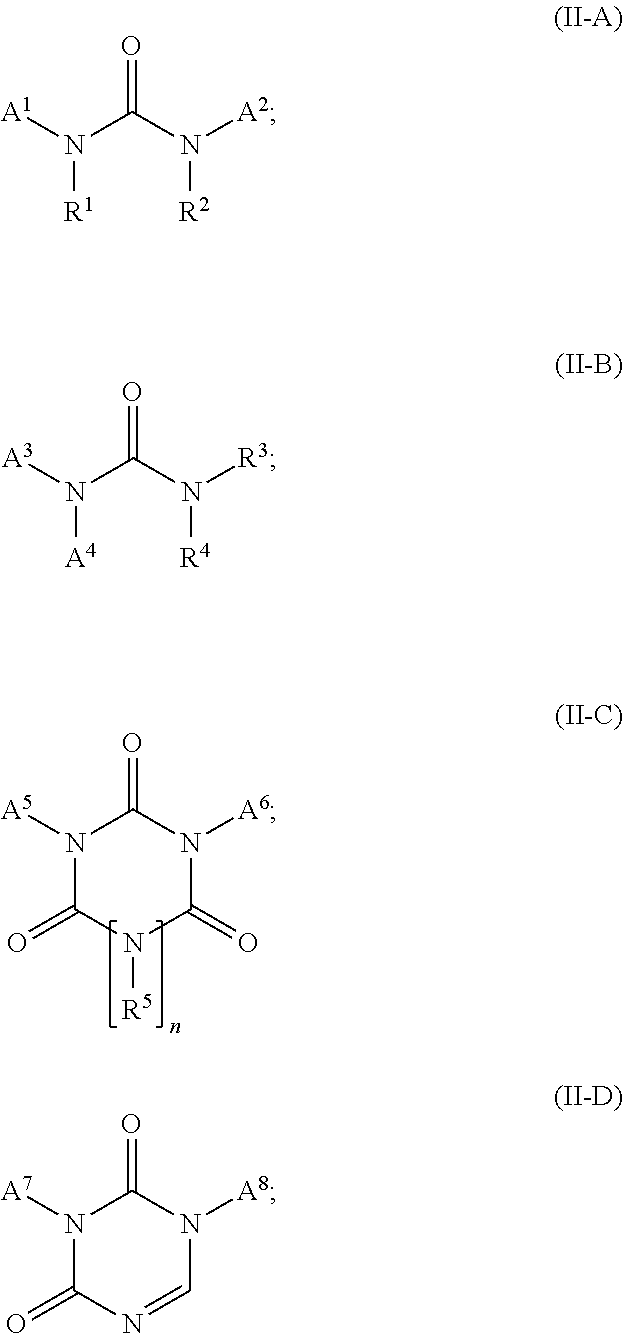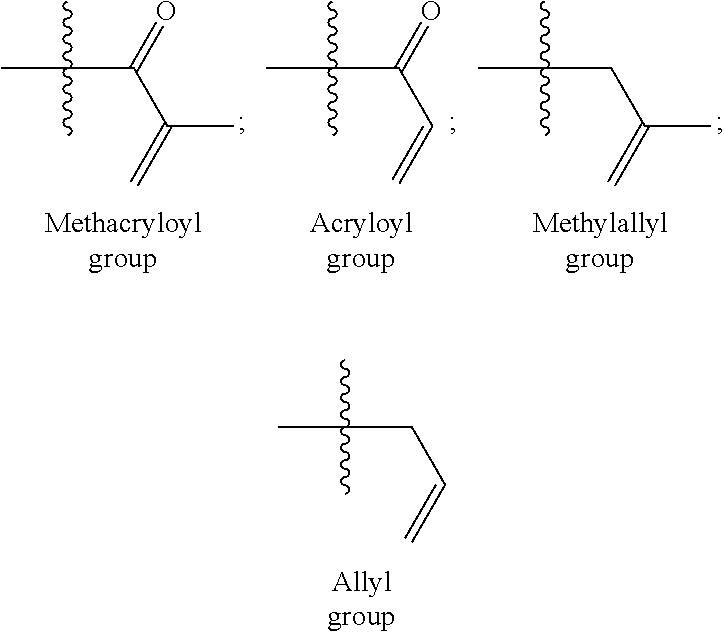Co-crosslinker systems for encapsulation films comprising urea compounds
a crosslinker system and encapsulation film technology, applied in the direction of organic chemistry, coatings, semiconductor devices, etc., can solve the problems of affecting the quality of pv modules, and affecting the encapsulation film's encapsulation film, so as to improve the volume resistance, improve the processability, and the effect of high transparency
- Summary
- Abstract
- Description
- Claims
- Application Information
AI Technical Summary
Benefits of technology
Problems solved by technology
Method used
Image
Examples
example 1
[0160]2.40 g (9.63 mmol) of TALC, together with 0.10 g (0.71 mmol) of 1,3-diallylurea, 0.5 g of KBM and 4.0 g of TBPEHC, were homogeneously mixed. The mixture was uniformly distributed over 493 g of EVA and the additive mixture thus obtained was then commixed in a tumbler mixer for 2 to 4 hours.
example 2
[0161]2.45 g (9.83 mmol) of TALC, together with 0.05 g (0.28 mmol) of triallylurea, 0.5 g of KBM and 4.0 g of TBPEHC, were homogeneously mixed. The mixture was uniformly distributed over 493 g of EVA and the additive mixture thus obtained was then commixed in a tumbler mixer for 2 to 4 hours.
example 3
[0162]2.45 g (9.83 mmol) of TAIC, together with 0.05 g (0.26 mmol) of diallylimidazolidinetrione, 0.5 g of KBM and 4.0 g of TBPEHC, were homogeneously mixed. The mixture was uniformly distributed over 493 g of EVA and the additive mixture thus obtained was then commixed in a tumbler mixer for 2 to 4 hours.
PUM
| Property | Measurement | Unit |
|---|---|---|
| temperature | aaaaa | aaaaa |
| thickness | aaaaa | aaaaa |
| thickness | aaaaa | aaaaa |
Abstract
Description
Claims
Application Information
 Login to View More
Login to View More - R&D
- Intellectual Property
- Life Sciences
- Materials
- Tech Scout
- Unparalleled Data Quality
- Higher Quality Content
- 60% Fewer Hallucinations
Browse by: Latest US Patents, China's latest patents, Technical Efficacy Thesaurus, Application Domain, Technology Topic, Popular Technical Reports.
© 2025 PatSnap. All rights reserved.Legal|Privacy policy|Modern Slavery Act Transparency Statement|Sitemap|About US| Contact US: help@patsnap.com



